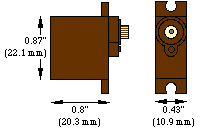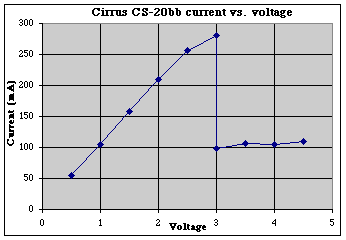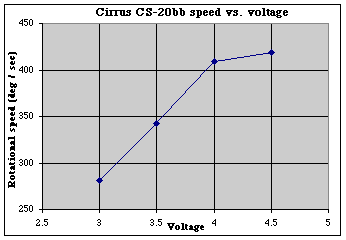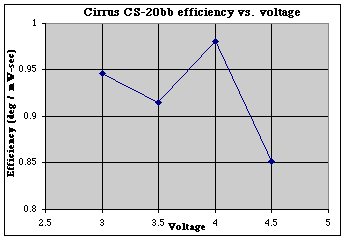|
|
BEAM Pieces is a BEAM Reference Library site.
Cirrus CS-20 "hacked" servo detailed
data
All the data that's fit to
print
|
 |
||
|
Comments Hobby servos need to be "hacked," in general, before they are used on a robot. This consists of disconnecting and removing the internal circuit board, removing the intenal potentiometer (if possible; some servo models use the pot to hold gears in place), and often removing a motion stop on one of the internal gears. "Submicro" servos are a real pain to hack since the pot not only holds gears in place, but has an internal stop -- so the pot has to be "hacked" to remove the stop (see here), and only useable over a very limited voltage range (and it's inefficient, to boot!). You really have to have a great need for tiny motors for this model to be worth your while (not to mention the $20 US it costs). Since its starting voltage is so high, this motor is only useable for a battery-powered BEAMbot. Note that hobby servos are designed to last just several hundred hours; while easily obtained, and relatively inexpensive, their short lifetime somewhat limits their usefulness (great for experimenting, not so great as part of a 'bot you'll give as a gift). Meanwhile, they're not all that efficient, and very noisy (in an electrical sense). You'll definitely want to connect a capacitor in parallel to any servo you put on an Nv-net-driven bot. Note that I stopped my testing of this motor at 5V due to erratic motor behavior |
|||
This page presents all the data from my testing of a single example of the Cirrus CS-20bb "micro" servo, "hacked" for full rotation. The test procedure I used is described elsewhere.
|
Voltage |
No-load Current (mA) |
No-load Speed (deg/sec) |
Efficiency (deg / mW-sec) |
|---|---|---|---|
|
|
|
|
|
|
|
|
|
|
|
|
|
|
|
|
|
|
|
|
|
|
|
|
|
|
|
|
|
|
|
|
|
|
|
|
|
|
|
|
|
|
|
|
|
|
|
|
|
|



|
|
||
|
|
This page was last updated on |
|